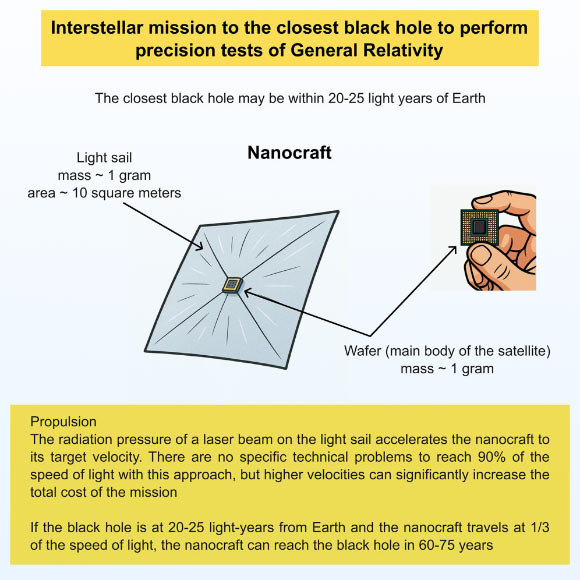Now Reading: Astrophysicist Calls for Interstellar Mission to Explore Black Holes
-
01
Astrophysicist Calls for Interstellar Mission to Explore Black Holes
Astrophysicist Calls for Interstellar Mission to Explore Black Holes

Swift Summary:
- A new paper published in the journal iScience by Professor Cosimo Bambi from Fudan University explores the possibility of sending a nanocraft spacecraft to a nearby black hole 20-25 light-years away to study it and test basic physics.
- Black holes possess the strongest gravitational fields in the Universe, offering an ideal surroundings to test Einstein’s theory of general relativity under extreme conditions.
- Currently,Gaia BH1 is the closest known black hole to Earth at 1,560 light-years away,but researchers estimate there could be unknown black holes closer – roughly 20-25 light-years – though detecting them remains challenging due to their invisibility and influence on surrounding stars.
- New detection methods may allow scientists to discover such black holes within the next decade.
- The proposed mission would involve nanocrafts featuring microchips and light sails powered by laser beams from Earth. These probes could achieve speeds of up to one-third of the speed of light.
- At such speeds, a probe could reach its target within approximately 70 years; another two decades would be needed for data transmission back to Earth, resulting in an overall mission duration between 80-100 years.
- The mission costs are currently estimated at around one trillion euros for lasers alone; however, advancements over the next few decades may lower these costs significantly.
Indian Opinion Analysis:
While speculative and futuristic, this concept represents a important milestone in interstellar exploration with potential ramifications for India’s scientific ambitions. India’s growing expertise in space missions through organizations like ISRO provides hope that Indian scientists might contribute meaningfully if research collaborations emerge around detecting nearer black holes or constructing advanced probes like nanocrafts.
Moreover, exploring fundamental questions such as whether general relativity holds near event horizons showcases humanity’s drive toward understanding worldwide laws-which transcends borders or nations. For India specifically-a country increasingly investing in both deep-space ventures and global science partnerships-such projects emphasize aligning long-term goals with frontier technologies that redefine human capabilities.
As technologies evolve globally (e.g., laser systems powering interstellar travel), it also signals pathways where India can focus on nurturing innovation ecosystems conducive for breakthrough ideas not limited solely by immediate feasibility but open visionary contributions systematically/scientifically realizing compelling futures
Read more: https://www.sci.news/astronomy/interstellar-mission-astrophysical-black-holes-14129.html




























